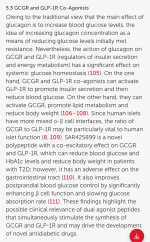The approach by
@Pinmebaby1moretime of switching rather than transitioning/stacking would be more medically sound / conservative / safe (even though reta is not FDA appoved yet). And the more I think about it, it seems more attractive to me since the path would be clearer. And Google Gemini agrees:
Here's a chart posed by
Lullabytreehugger that may help (but I have to constantly remember that lower numbers are stronger, on a log scale):
View attachment 7168
Before I saw this chart, I didn't know that reta is stronger for GIP than tirz. So reta is the clear winner in both the GIP and GCGR department (even compared to tirz with survo).
So if switching cold turkey (going completely off tirz), I don't think a washout period is needed since one normally starts on a low dose anyway, and the only concern would be reta's stronger (but dose-dependent) effect on GIP. Of course, even stopping tirz completely, you still will have tirz in your system for several weeks, gradually declining.
For transitioning by lowering the tirz while starting reta (which is what I was originally planning buy maybe not anymore), I don't know what dose schedule to use. Since it would be relatively experimental/risky, I would go slowly, at least since I could have a lot of tirz left over anyway.
More info:
Had to use chatgpt...
Google isn't helping me here and I'm feeling incredibly dumb for not quite understanding what these numbers mean.
The
GLP-1 K value is a measure of the binding affinity of a ligand (such as a GLP-1 receptor agonist) to the GLP-1 receptor. GLP-1 (glucagon-like peptide-1) is a hormone that plays a role in glucose metabolism, and its receptor is a target for drugs used in the treatment of type 2 diabetes and obesity.
Key points about the GLP-1 K value:
- Definition of K value:
- The "K" generally refers to a dissociation constant...



